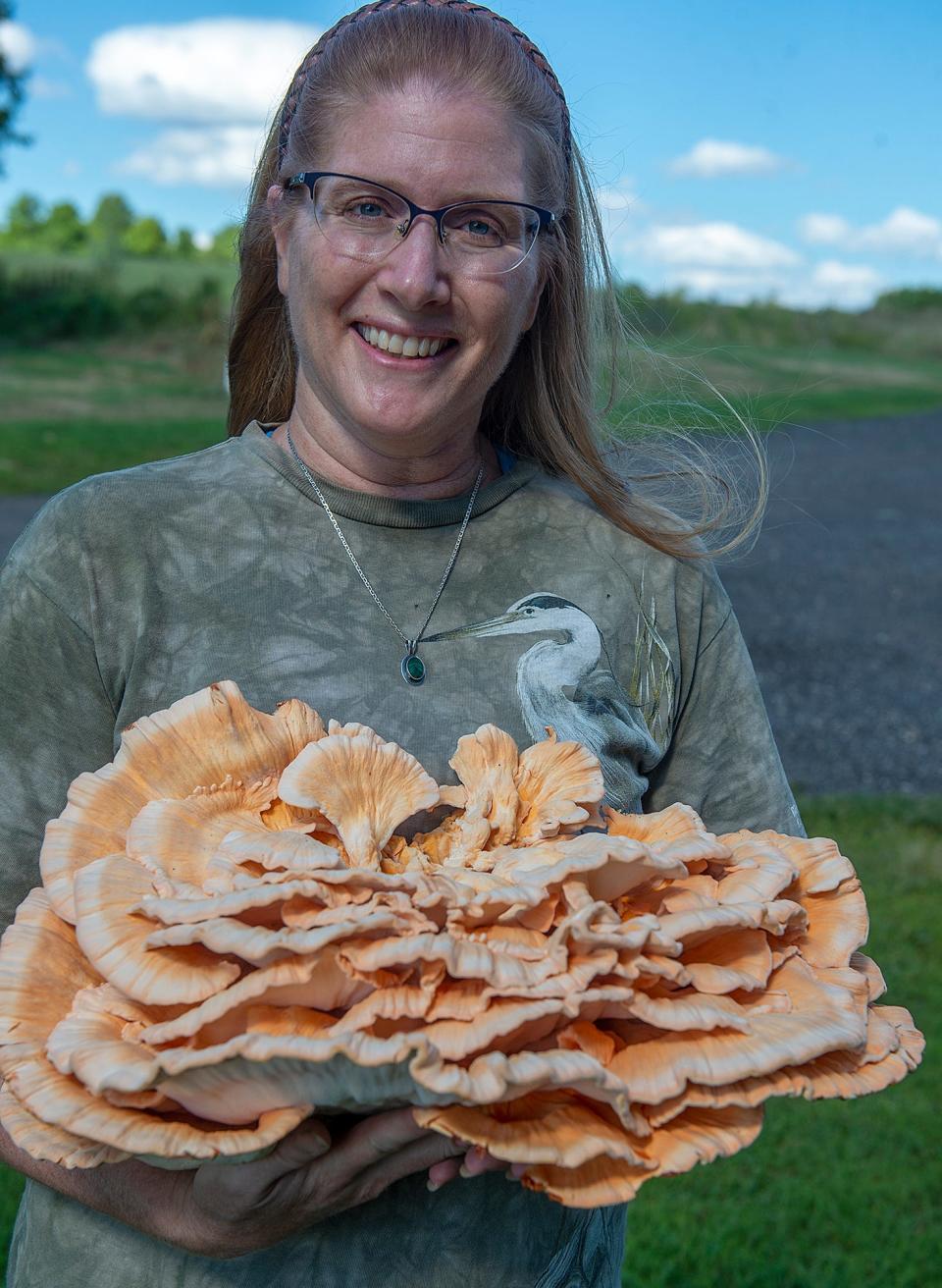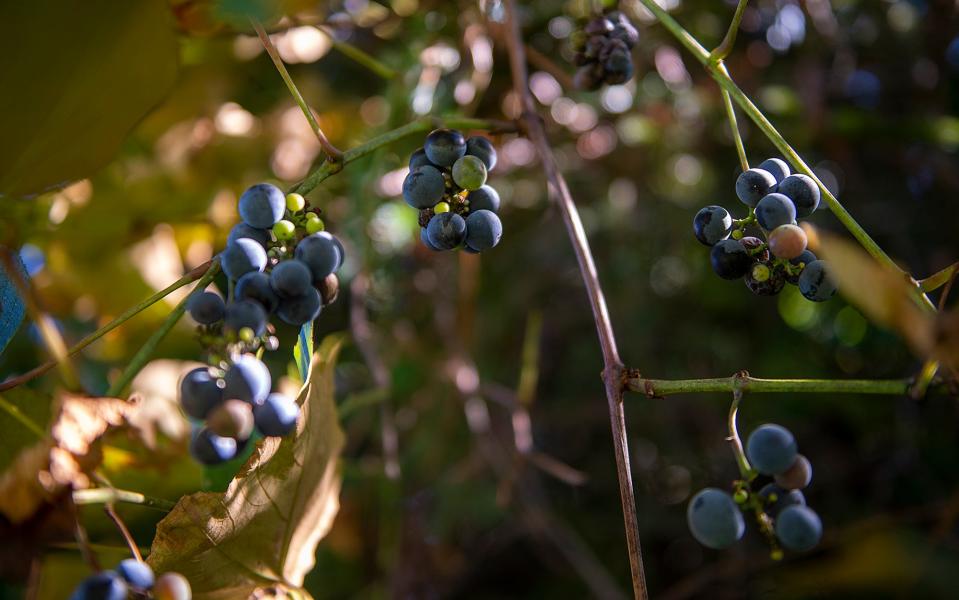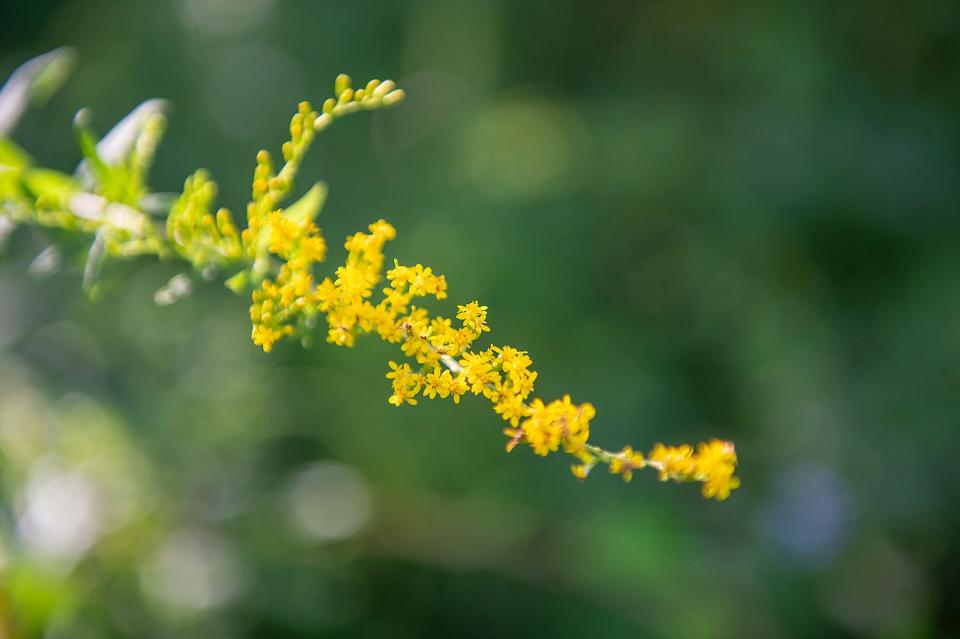This chicken can grow on trees: foraging tips from 'Cooking with Mrs. G'
A special type of fried chicken sandwich was on the menu for Rachel Goclawski and her family last week.
The Millbury resident and creator of “Cooking with Mrs. G” was planning to make a beer-battered meat alternative — but this type of “meat” literally grows on trees.
Chicken of the woods is an edible fungus with large, fluttering shelves of vibrant orange. It's often found on oak trees or other hardwoods.
Goclawski is a forager — someone who uses things found in nature, such as mushrooms, fruits and herbs, for food, syrups and natural remedies.
On social media: Rachel Goclawski offers foraging classes on YouTube
When she began foraging many years ago, “people didn’t even know what foraging was — the average person didn’t know what it was. They were all afraid of mushrooms, they didn’t want to touch them,” she said.
Now, many of the classes she teaches fill quickly. And her foraging advice, recipes and content — with millions of views — can be found on TikTok.
Chicken of the woods is a relatively safe mushroom for amateur foragers, because its lookalikes are other varieties of edible mushroom, like Hen of the woods, Goclawski said.
Plus, foraged food makes great snacks and drinks: False Solomon’s seal, which can be differentiated from the poisonous Solomon’s seal by the grouping of berries at the end of the stalk, can be great “trail nibble,” according to Goclawski
How to get started in foraging
The first thing to check is whether a property allows it. The Sudbury Valley Trustees, for which Goclawski is a programming partner, have no-foraging rules on their properties, for example, so it’s always good to check ahead of time.
Goclawski suggested that those who are interested in foraging to do research or take a class: There are many edible plants that have poisonous lookalikes. A good foraging guide will have key identifiers for parsing the edible from the harmful.

Take wild grapes, for example. Beautifully round, dark purple wild grapes have a pungent aroma and make fabulous jams and juices. The leaves can be boiled or steamed and used as wraps, like Dolma, a Greek recipe of rice wrapped in grape leaves.
But the shape of the leaf isn't a great indicator of whether a grape is actually a grape. Instead, foragers should look at other factors. Larger wild grape vines are covered in a peeling bark. Virginia creeper, a lookalike, also has vines with bark. But Virginia creeper will have many forked tendrils at the end of a vine while a true grape has just two.

Canada moonseed, the most deadly lookalike, has just one crescent-moon shaped seed inside the fruit. Grapes have multiple seeds.
"You have to check all three of those things," Goclawski said.
Goldenrod is a good place to start, but she suggested being a bit more cautious at first about things like wild carrots or elderberry, which have very poisonous lookalikes.
Foraged material can also be made in to natural remedies. Goldenrod teas are diuretic and the leaves can be chewed to help with canker sores. The best time to pick and use goldenrod is at the height of blooming, she said, when each stalk is lined with dozens of small, yellow blooms. Luckily, there are many varieties of goldenrod with different flowering schedules, increasing the likelihood of catching the plant before it is past it’s prime.

Another thing with foraging is that it can reveal allergies and sensitivities people weren’t previously aware of. Goclawski suggested just taking a bit or two of chicken of the woods, for example, before committing to a whole sandwich.
An anti-itch cream for the ages
It’s also a good idea pay attention to your surroundings, both the terrain and the greenery, when foraging. Poison ivy, for example, causes a rash in most people — and it isn’t always bright red or glossy. The plant can grow along the ground or creep up other plants and structures, especially around often-trod paths.
No matter the season, poison ivy can be identified by its compound leaves — three leaflets attached to the same stalk — with the middle leaflet on a longer stem than the surrounding two.
But if you do think you might have brushed the ivy, which can cause skin irritation, a remedy could be found just around the corner. Jewelweed, so-called for the bright orange and red, trumpet-shaped flowers that hang from the spindly plant like jewels on a necklace, has been used for centuries as a natural remedy for skin irritation. The plant is also called “touch-me-not” since the seed pods pop open when prodded.
Goclawski likes mixing it with witch hazel and other herb so it works for bug bites, bee stings, poison ivy and sunburns.
"Then I have this all-purpose salve — I never have to go to CVS and buy first aid creams or insect bite creams. It takes care of everything," she said. "I have some in my pocketbook...it saves you money and it works better than the stuff in the drugstores."
Be kind, rewind
Just as VHS tape users were once asked to be kind enough to consider the next user, Goclawski said foragers should also be mindful of other foragers — both the animal and the people variety — and not be “unscrupulous.” This is especially important to consider during a drought year where animals may already be strapped for resources and plants are under a lot of stress.
The exception to that rule is, of course, invasive plants like garlic mustard and autumn olive, which can be harvested with guilt-free abandon. Autumn olive berries, which taste like cranberry pomegranate, can be enjoyed raw or cooked. Goclawski uses the bright red berries in smoothies, sorbet and to make fruit leather.
“If you went and foraged a lot of native plants, then they wouldn’t be able to re-seed,” she said. “You should always forage with future harvests in mind — and wildlife in mind.”
A full list of Goclawski's upcoming classes can be found on her website. Here are a few upcoming dates:
Sept. 10: "Introduction to Mushrooming," at the Cape Cod Museum of Natural History in Brewster
Sept. 24: "Autumn Foraging and Mushrooming," at Turn Back Time in Paxton
Oct. 15-16: "Demonstrating Mushrooms," in the barn at the Warter Farm Fall Festival in Sutton
This article originally appeared on MetroWest Daily News: Foraging tips framingham milford mushrooms goldenrod

